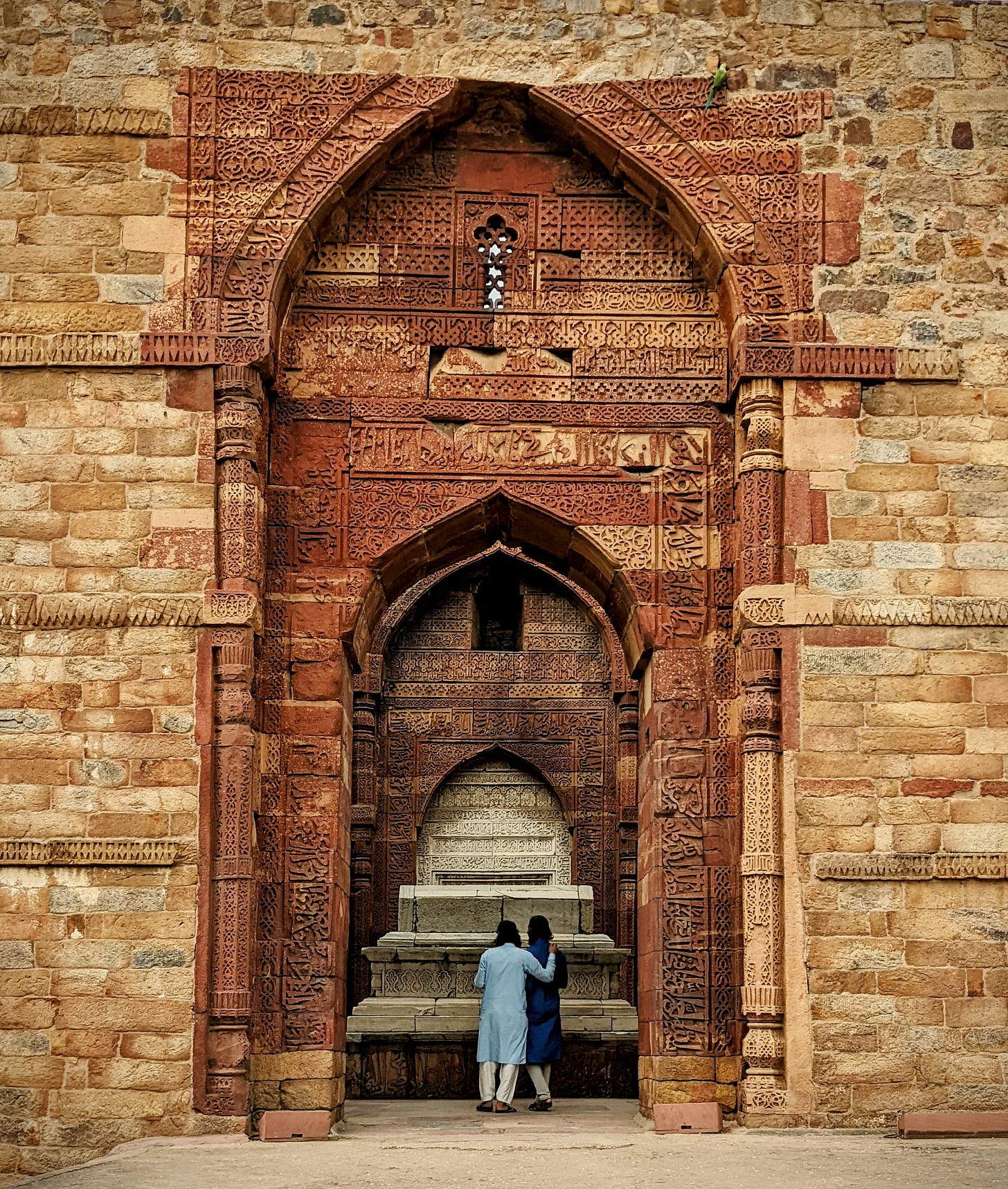Dear Adventurers,
As you’ve probably gathered from some of my social media posts, I’ve just returned from an inspiring and restorative trip to Italy. From stylish Milan, to enchanting Venice, to gritty Naples, to the breathtaking beauty of Sorrento and the Amalfi coast - each stop was truly mesmerising.
Best of all, I got to have a gelato every day!
Travel has always played a crucial role in my creative process. And as we continue our exploration of The Indus Star, this month I want to share some insights into my writing processes. One of the most exciting aspects of writing stories like mine is the blend of thorough research and imagination. Before my fingers ever hit the keyboard, I spend countless hours at home researching historical events, legends, and archaeological mysteries. But the real magic happens when I step out of the books and into the world, traveling to the very places where the story unfolds.
🤠 An Epic Adventure Through India
For The Indus Star, my research trip to India was an unforgettable experience. From bustling cities to ancient wonders, each stop offered inspiration for the plot, as well as grounding the fictional elements in real history. Below are some of the most memorable places I visited.
See if you can remember which scenes in The Indus Star feature these locations. Scroll down to get the answers!
Ajanta Caves
The Ajanta Caves, nestled in the Deccan Plateau of Maharashtra, house masterpieces of ancient Buddhist religious art. Dating back to the 2nd century BCE, these 30 rock-cut caves were used as retreats by Buddhist monks. Each cave is adorned with intricately painted frescoes and exquisite sculptures that capture the life of the Buddha and various Jataka tales, which illustrate his previous incarnations. The vivid colors and expressive details of these murals not only exemplify the artistic genius of their creators but also provide a window into the cultural and historical context of the time. The caves are now recognized as a UNESCO World Heritage Site, celebrated for their contribution to the global heritage of mural painting.
(Answer: Chapters 20-23 - Georgia and Sarah get trapped in the collapsed cave.)
Ellora Caves
While the Ajanta Caves are known for their paintings, the nearby Ellora Caves are renowned for their sculptures. Dating back to the fifth century, this UNESCO World Heritage Site includes temples dedicated to Buddhism, Jainism, and Hinduism, demonstrating the religious tolerance and harmony of the time. Of particular note within this complex is the Kailasa Temple, which is considered one of the most remarkable rock-cut temple in the world. It’s a monolith hewn from a single basalt stone, carved from the top down.
(Answer: Chapters 19 - Georgia and her team visit the Kailasa Temple, searching for the Cosmic Eye.)
Sanchi
Sanchi, located in the state of Madhya Pradesh, is famous for its ancient Buddhist stupas, monasteries, temples, and pillars dating back to the 3rd century BCE. The most notable among these is the Great Stupa, commissioned by Emperor Ashoka, one of India’s most celebrated rulers and a pivotal promoter of Buddhism. This stupa is an architectural and spiritual marvel, adorned with intricately carved toranas (gateways) that depict various scenes from the life of Buddha, illustrating his teachings and the journey towards enlightenment. Surrounding the main stupa are several smaller stupas and remains of what were once thriving monastic complexes, showcasing the rich history of Buddhist education and philosophy. Sanchi's unique blend of art, history, and spirituality attracts scholars, pilgrims, and tourists from around the world, making it a UNESCO World Heritage Site and a poignant symbol of India’s Buddhist heritage.
(Answer: Sanchi wasn’t featured in The Indus Star, but it was an inspiring place to visit!)
Taj Mahal
This iconic site needs no introduction, but if you’re ever wondering if it’s worth a visit, read my earlier post here.
(Answer: Taj Mahal wasn’t featured in The Indus Star, but maybe it will in a later book!)
The Qutb Complex, Delhi
The Qutb Complex in Delhi, India, is a spectacular array of historical structures that dates back to the 12th century, marking the beginning of Muslim rule in India. The site is dominated by the Qutb Minar, the tallest brick minaret in the world, standing at an impressive 73 meters. Surrounding the minaret are various ruins, which include mosques, tombs, and architectural fragments that showcase the rich blend of Hindu and Islamic art styles. Among these is the Iron Pillar, renowned for its rust-resistant composition of metals.
(Answer: Chapter 32 - Georgia and her team visit the Iron Pillar to search for clues.)
Thiruvananthapuram
In the heart of Kerala, I was invited to an afternoon tea party with the princesses of the Travancore royal family. It was a surreal experience, filled with stories of royalty, tradition, and history, which all found their way into the narrative threads of The Indus Star.
(Answer: Thiruvananthapuram features in a significant section of the book, from Chapter 38 onwards.)
It was also in this city that I visited the Sri Padmanabhaswamy Temple, a place of untold riches and mystery, where The Indus Star reaches its thrilling climax.
We’ll delve into this fascinating temple next month, so stay tuned!
Something to Watch:
If you’re interested in learning more about the splendid wonders of India, check out the documentary, The Story of India, presented by the British historian, Michael Wood. There are 6 episodes to this TV mini series, spanning from India’s ancient beginnings to the modern day, and traversing from the northernmost parts of the country to its southern tip. I drew a lot of inspiration from this documentary while researching for The Indus Star. Best of all, you can stream it for free from here!
Until next month,
A. H. Wang
This Month’s Book Promos
Latest Instagram Posts
Come visit me on Instagram or Facebook to have a look at some of the behind-the-scenes pics and stories!
Follow
Follow me on Bookbub
Follow me on Amazon
Find me at www.ahwangauthor.com













